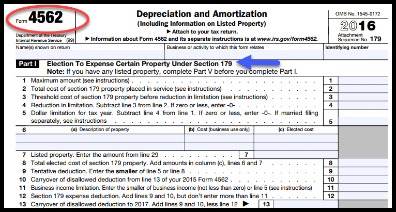Content

Rather than interfere with the payroll department the calculation is made on paper , and entered as an adjusting entry. After the closing entries are made, the first entries of the new year are the reversing entries. They undo the effects of the adjusting entry. Once the adjusted trial balance has been prepared, we are ready to prepare the financial statements. Preparing financial statements is the seventh step in the accounting cycle.

A.Each line item is expressed as a percent of some total or key amount within the same statement. Of total monthly production, find the total monthly production of door hinges. 1,500.00cashonaccountfromNaturalProductsforequipmentpurchasedonApril22,nodiscount.R606.1,500.00 cash on account from Natural Products for equipment purchased on April 22, no discount.
Chapter 6: Accounting For a Merchandising Enterprise
This net income figure is used to prepare the statement of retained earnings. We can create the adjusted trial balance in our sixth step in the accounting cycle. KLO has paid in advance $3600 for insurance. With this payment KLO has not received the benefits of the insurance yet and thus this future benefits that they will receive should be recognised as an asset in the account Prepaid expense. Prepaid expense would increase and as it is an asset account, it increases on the debit side. Journal entries are recorded when an activity or event occurs that triggers the entry.
- They undo the effects of the adjusting entry.
- The payroll expense for the two week period needs to be split between two years, with $1,500 in year 1 and $1,500 in year 2.
- Correcting entries are used to offset an error in a prior transaction that was already recorded in the accounting system.
- Correcting entries are journal entries made to correct an error in a previously recorded transaction.
- In transaction 3, KLO received $4000 from a customer for an app to be developed.
- Under the periodic inventory method, we do not record any purchase or sales transactions directly into the inventory account.
Although the total interest expense will not be paid until April 2019, the company must still accrue the two months interest expense as it is incurred in the current reporting period. It implies that the revenues and expenses must be recorded in the corresponding financial period irrespective of the cash received. Therefore, the adjusting entries are passed, and balances are transferred to general ledger accounts. Correcting entries are journal entries made to correct an error in a previously recorded transaction. Correcting entries can involve any combination of income statement accounts and balance sheet accounts. The adjusted trial balance is the key point to ensure all debits and credits are in the general ledger accounts balance before information is transferred to financial statements.
Company
Notice the net income of $5400 from the income statement is carried over to the statement of change in equity. Dividends are taken away from the sum of beginning retained earnings and net income to get the ending retained earnings balance of $5300 for the current month. This ending retained earnings balance is transferred to the balance sheet.

Adjusting entries are journal entries that are made at the end of the financial reporting period to correct the accounts for the preparation of financial statements. They are used to implement the matching principle, which is the concept to match the revenues and expenses to the “right” period. Certain end-of-period adjustments must be made when you close your books. Adjusting entries are made at the end of an accounting period to account for items that don’t get recorded in your daily transactions. In a traditional accounting system, adjusting entries are made in a general journal.
Comparing Adjusting Entries and Correcting Entries
Financial statements drive decision-making for a business. Budgeting for employee salaries, revenue expectations, sales prices, expense reductions, and long-term growth strategies are all impacted by what is provided on the financial statements. In the journal entry, Prepaid expense has a debit of $3600.
- Trial balance is the conclusion of general ledger accounts.
- As there were no previous transactions related to these accounts, the final balances are $5000 debit and $5000 credit respectively.
- In the journal entry, Unearned Revenue has a debit of $600.
Even though you are “adjusting” your business’s financial records, making an adjusting entry involves a proactive approach rather than a reactive one. This means that you will not need to go “back in time” to correct or alter any data. Instead, you will merely input a new entry with the “amended” data. Did you sell any fixed assets during the year?
What are the Benefits of Factoring Your Account Receivable?
With workflows optimized by technology and guided by deep domain expertise, we help organizations grow, manage, and protect their businesses and their client’s businesses. The company recorded What Is The Difference Between Adjusting Entries And Correcting Entries? supplies usage for the month. Supplies is a type of prepaid expense that, when used, becomes an expense. Supplies Expense would increase for the $100 of supplies used during January.
For example, adjusting entries may be used to record received inventory for which no supplier invoice has yet been received. Or, they may be used to record revenue that has been earned but not yet billed to the customer. Under the periodic https://kelleysbookkeeping.com/ inventory method, we do not record any purchase or sales transactions directly into the inventory account. The unadjusted trial balance for inventory represents last period’s ending balance and includes nothing from the current period.
Leave a Comment